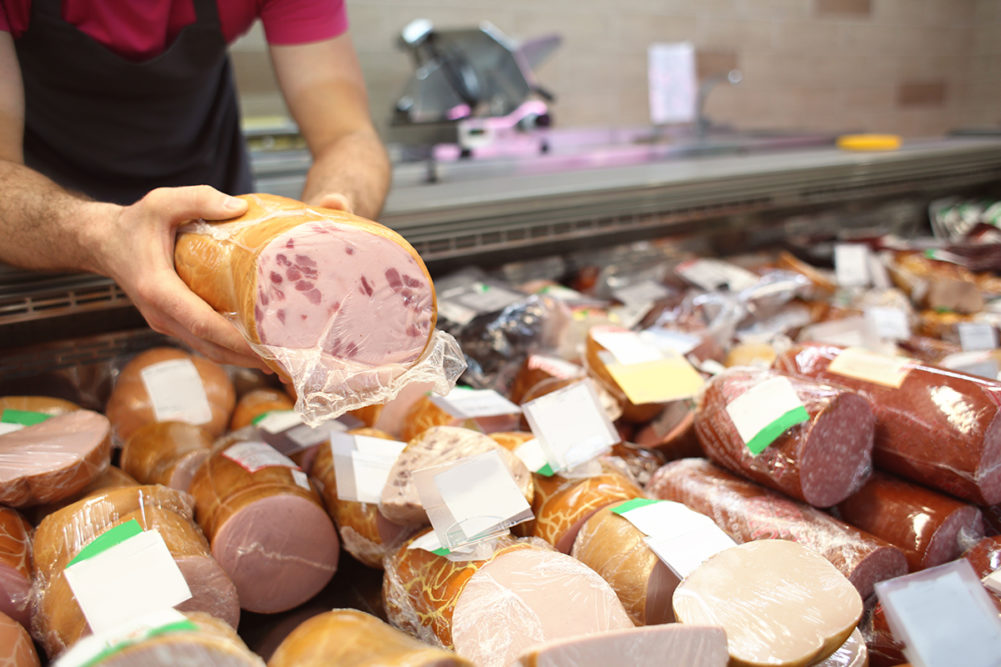In the current environment, a lot of what happens in the grocery store, including the meat department, ends up being a reflection of the marketplace, said Anne-Marie Roerink, president of San Antonio-based 210 Analytics.
“Retailers are working hard to find ways to address 40-year high inflation, whether that’s through creative ways to run more and deeper promotions, offering meal deals or being the more cost-effective option to a restaurant meal for special occasions.”
For instance, she said, retailers are offering a lot more mix-and-match promotions. That might take the form of a variety of proteins available at a set price.
But there are also retailers that have created mix-and-match promotions that include vegetables and sides, which creates more of a meal kit or meal deal.
Inflation busters
Consumers have proven that meat and poultry products are in demand despite inflationary pressure, said Beth Breeding, vice president of communications and marketing for the Washington, D.C.-based National Turkey Federation.
The turkey industry, she said, is focused on delivering the products consumers love and innovation that will lead to growth in the category, including amplifying turkey’s versatility in grilling and applying bold, exciting flavor profiles.
“Deli will also remain an important category for turkey as budget-conscious shoppers seek ways cut spending by preparing lunches and meals at home,” Breeding said. “For turkey producers, it's difficult to predict how the lingering avian influenza outbreak will affect the industry going into 2023. However, it is reasonable to assume that recovery for certain parts of the industry will take some time, just as we saw in 2015 following the last major avian influenza outbreak.”
One bright spot is case-ready products, which already represent a significant amount of turkey products available at retail, and the industry can expect to see a continued shift towards case-ready across the meat department, Breeding said.
“These products are convenient for shoppers to quickly grab and can help alleviate staffing challenges at the meat counter.”
Downsizing
What Roerink said she has not seen much of is a big adjustment in assortment that addresses the greater availability of cheaper cuts and varieties. One possible example: 80% ground beef instead of 93%.
That said, given the intense inflationary pressures, she does expect unit size to be an area of great focus — not just in meat, but in all departments.
Across all foods and beverages, prices are up 25-27% versus the pre-pandemic normal of 2019.
“Center-store CPG has long had a history of adjusting package sizes to absorb some of the inflation other than just increasing the price, but in fresh, we tend to have less flexibility that way,” Roerink said. “Experimentation with smaller pack sizes often shows that people will trade down, which means package size variation needs to go hand-in-hand with adjusted price-per-pound points to offset the smaller quantity sold.”
At the same time, she added, greater variety of package sizes can keep proteins in the affordable range for all households rather than having people substitute out of the category, making package size variety an important issue for retailers to fine-tune in 2023.
Another change the industry is likely to see in the coming year, Roerink said, is the continued growing share of private brand representation across proteins. Many retailers are leveraging their two or three tier private brands in the meat case, as well, to highlight premium or lower-cost options for their shoppers.
Consumers can also expect to see less assortment in meat and poultry cases in 2023.
“With continued supply chain issues and an industry-wide pullback on SKU variety in the case, I think we’re going to see less assortment for a while to come,” Roerink said. “Retailers are honing in on SKUs that are delivering big for them while trying to drive consumer trial of new cuts and kinds to keep the at-home meal interesting.”
In terms of sales and velocity, the industry is seeing a lot of pressure on plant-based meat alternatives at the moment, she added. Many retailers are pulling back on the number of facings, while others are moving items to the frozen food aisles.

